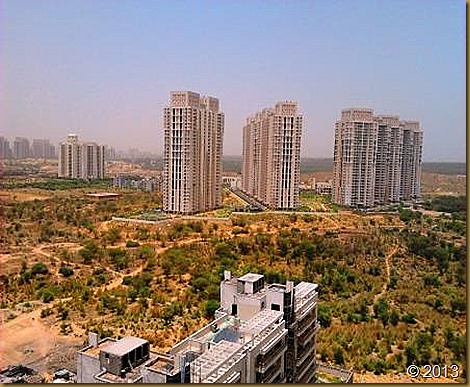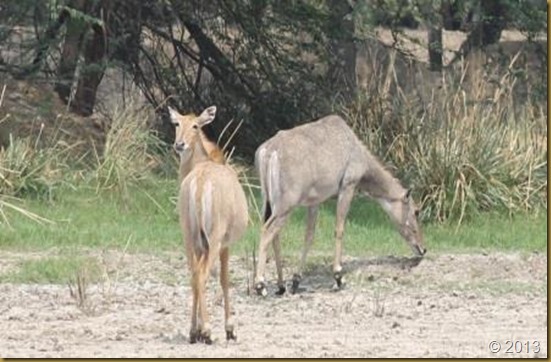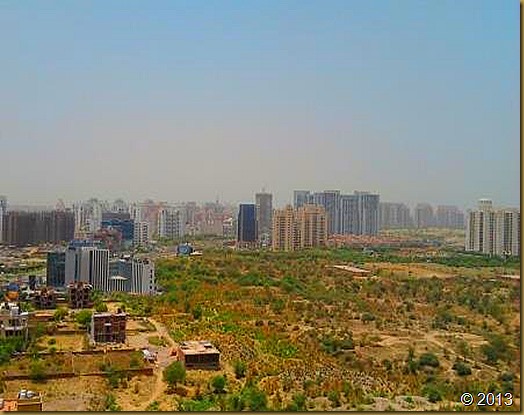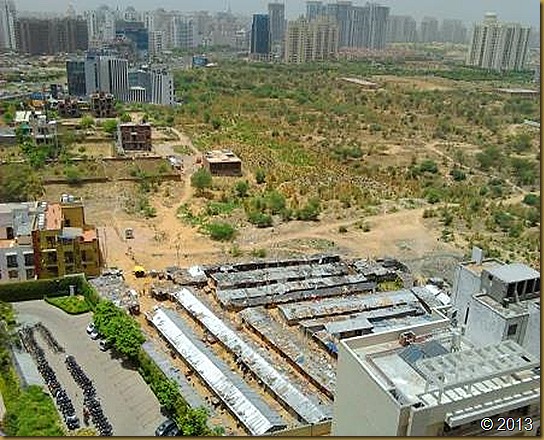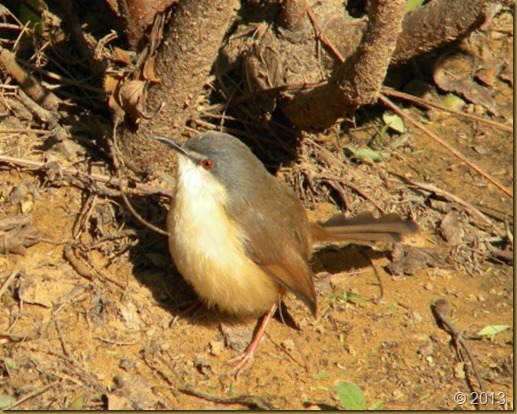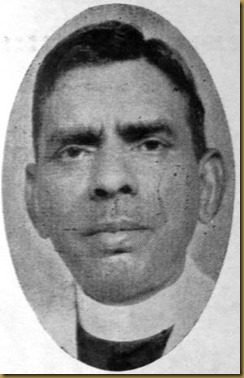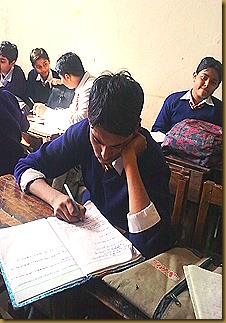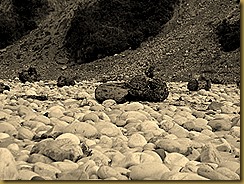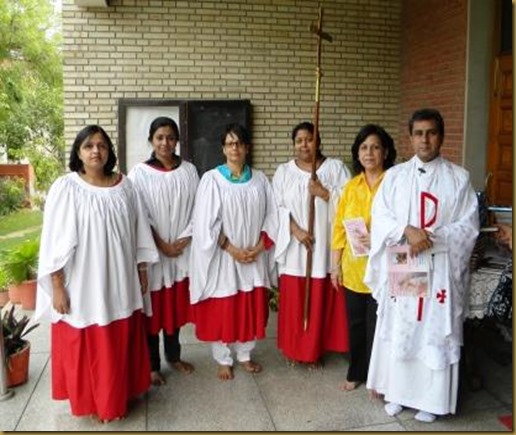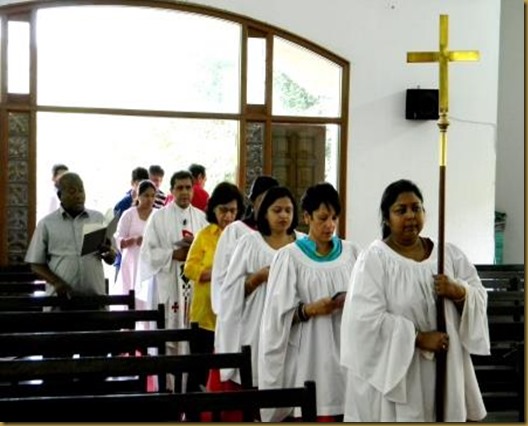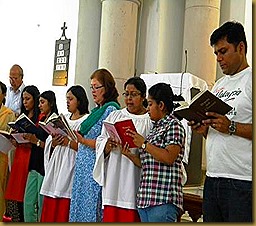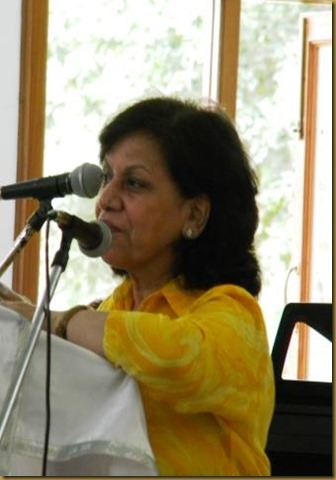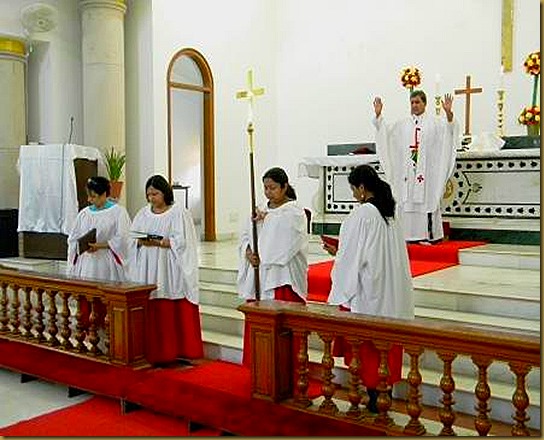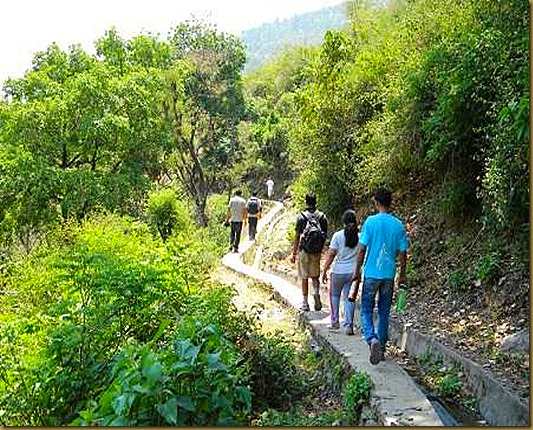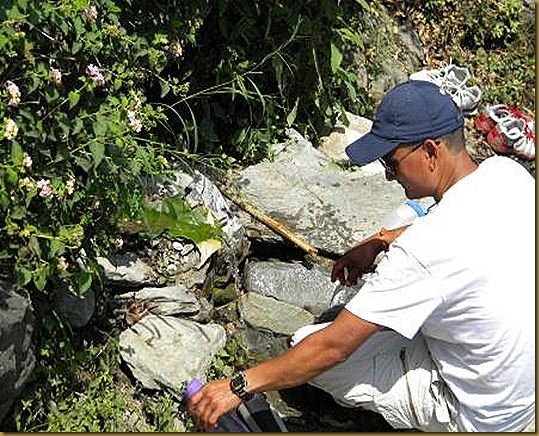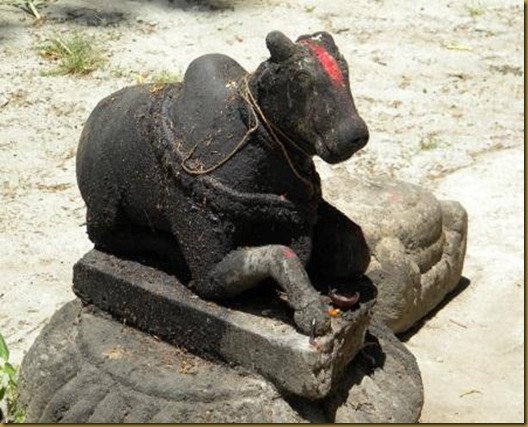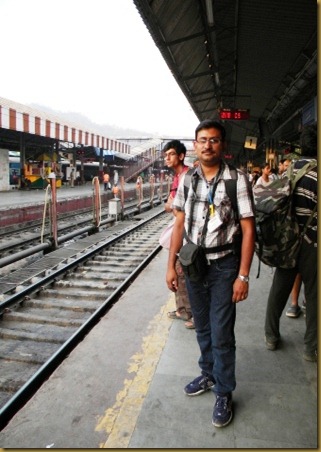The first rapid starting down-stream from the High Five Camp
On the fifth of May-2013,we started from Gurgaon, a group of three teachers and forty-three students of class twelve for the New Delhi Railway station for the adventure camp at Jayalgarh, Uttarakhand. At the New Delhi Railway station we were joined by Tara, Vinod, Mamta and Tariq, escorts from Youreka.We caught the Dehradun express till Haridwar, a four hour journey. From Haridwar we boarded some jeeps all the way to the High Five Adventure camp at Jayalgarh. On the way we passed through Rishikesh and Devprayag, the confluence of the Alaknanda and the Bhagirathi.
Diving into the water from the rock
On reaching the camp we were allotted tents, given a briefing about the camp rules and then after a sumptuous breakfast were taken out to the banks of the river Alaknanda for the body-surfing/floating and diving activities. After this we had lunch and then boarded a bus and drove to Srikote, a spot seventeen kilometres up-stream for the white-water rafting activity. Another round of instructions on white-water rafting and then we set of downstream to the point where our camp was located. On the way we passed through some really scary rapids, eddies, and whirlpools. The exciting part was when our instructor told us to jump overboard into the water! This was a frightening moment for us as we could feel the currents tugging at us, and at times when the river bottom fell away, our imaginations ran riot! It was difficult to board the raft without the help of the instructor, and he told us about techniques of boarding the raft. All the time we were in the water, we clung to the lifeline attached to the raft. We finally reached base camp after having floated downriver for seventeen kilometres. In the process, we were able to defeat some the other rafts through some strenuous paddling and the expert guidance of the instructor.
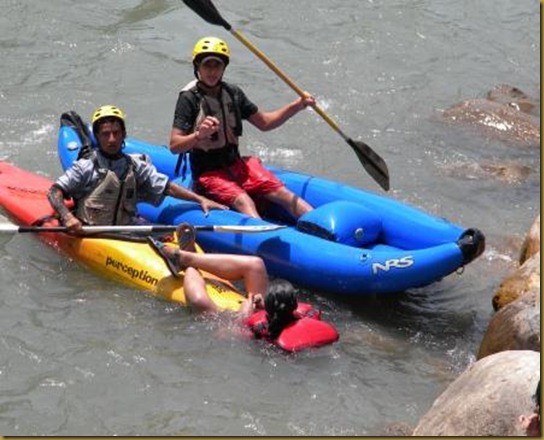
Trained rescuers
Somehow it was a welcome break for all of us in the group to visit an adventure camp in the mountains, especially as it provided for out bound learning for all of us. This results when students are taken out of their comfort zones and exposed to the elements. In this trip I was able to see the typical class room bullies go soft when faced with the prospect of rafting down a river full of rapids and whirlpools! Adventure Spots activities ultimately teach us to respect the untamed power of Nature, and the need to preserve it. Such activities also help build Team-Spirit amongst students and teachers. I have seen difficult the resolve of difficult students, crumble into dust at the prospect of rafting down river or even Slithering down a rope tied to a bridge on the the boiling waters of a mountain river. Many of the so called brave members of the group came up with excuses of migraines or even asthma attacks in order to avoid having to participate in the adventure activity! Moreover, I could see how even the most unassuming students had the ability to show immense reserves of grit, guts, patience and staying power, and even leadership qualities during the adventure activities. As far as the class room bully, well, it brought out his vulnerability when faced by a daunting task.
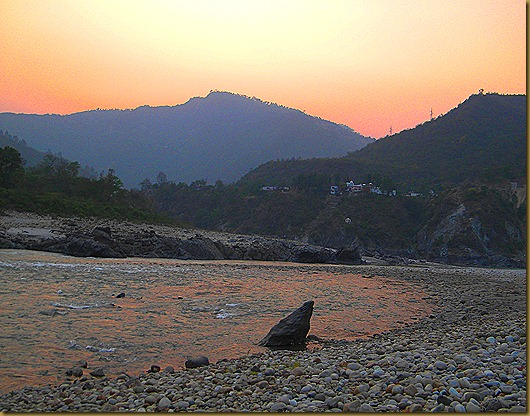
Sunset from the High Five Camp-Jayalgarh
Sitting on the banks of the Alaknanda, I couldn’t help but think that much real learning takes place outside the class room.The drive through the the mountain roads, taught us about how difficult it is to maintain roads on the mountain roads. every where we could see gangs of workers clearing the roads of debris resulting from landslides. It was there to see how humans have affected the environment so adversely by cutting down trees and denuding mountains of valuable green cover. The cutting down of trees has lead to an increase in the number of incidents of landslides. In many places a major portion of the mountain had slid on to the road all but blocking it. There seemed to be an unending battle between man and nature with visible instances of entire mountains seemed to be held back by tenuous measures of piled rocks bound together with a cage of wires. The few trees that were hanging for dear life seemed to be fighting a loosing battle with roots sticking out of the exposed mountain side. Funnily enough, placards warning about potential landslide areas had been put up where it seemed there was least danger, while visible landslides had no placards, guess they had been swept away.
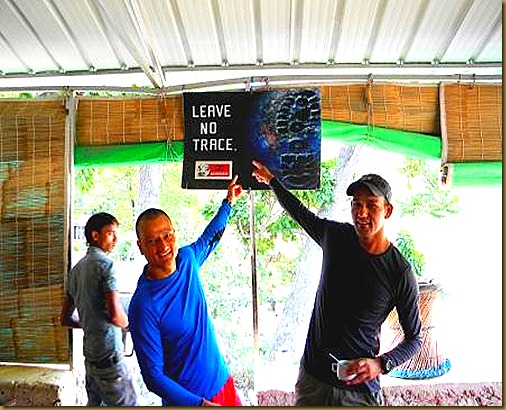
Vinod and Tara tell us to leave no trace!
One of the important instructions given to the group at the camp was about the tenets of Eco-Tourism, the concept of LNT or Leave No Trace. The idea behind this concept is that we should not in any way damage the local ecology by leaving behind garbage, or try to alter the same. A hand-book offered to all of us advised us not to pick up collectibles such as drift wood, or rocks as souvenirs so that others coming after us could appreciate them after we left.
Is this bird rare?
On the second day we went trekking on the mountain after breakfast. To say that it was a tough and difficult trek would however be an understatement. A number of minor falls, especially on the backside, scrapes, bruises were some of the trophies of the war. If this was difficult, then imagine how much more daunting the next activity would be of “Slithering down a Rope” from a bridge on to the waters of the Alaknanda! The catch? Well, the rope ended a metre above the water, so the participants had to take the plunge-not for the green hearted!
The Trek down hill
Vinod demonstrates the art of extracting drinking water
On the third of our our adventure tour, we went white water rafting downstream from Jayalgarh to Devprayag, the confluence of the Bhagirathi and the Alaknanda. The distance we covered was twenty-three kilometres.If the rafting we did on the first day was terrific, then what we did on the third day was explosive! The speed of the river was greater still and there were more rapids, more whirlpools. A number of times it appeared as if our raft would capsize and of course we were frequently deluged with water endlessly.We had to paddle really hard at times in order to guide the raft through the rapids. The water was rough and choppy and we were awed by the power of the flow. In one place we got stuck in a whirlpool and went round and round in circles on one side of the river. We had to paddle very hard to get out of it.Our guide was a very experienced person who knew every nook and cranny like the back of his hands and so we trusted him. Wherever the water was calm enough for a stretch, some of us went overboard to float in the water. By the time we reached the pick up point, off Devprayag, we were all quite exhausted. In this activity we came across some plus three class rapids.
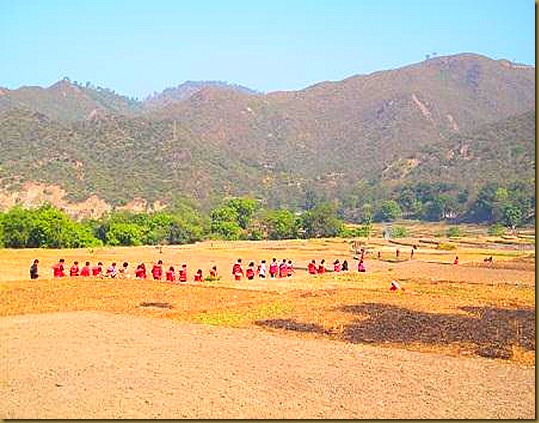
Trekking towards the river crossing point
The fourth day at Jayalgarh included two activities: crossing the river with the help of a rope strung across the river and a stream walk. The first activity was terrific! Looking at the task from far it looked relatively easy, but then when I did get into the water and started the crossing, it became clear that it would take all my strength to hang on to the rope. By the time I reached mid-point, I realised how strong the current was. By now my hands were burning with the strain of holding against the current. The whole rope was humming with vibration, and my face was just a few inches above the fast moving water, my body, submerged in the water seemed to be in the grip of the river currents. By the time three-fourth of the distance had been covered, it was pure agony! It was only after reaching the other end that I was able to breath a sigh of relief. Incidentally, a few others were swept away by the stream as they could not hang on for long. Most of us who crossed the river with the help of the rope however didn’t have the energy to return the same way, so we asked one of the instructors to ferry us back on a raft.
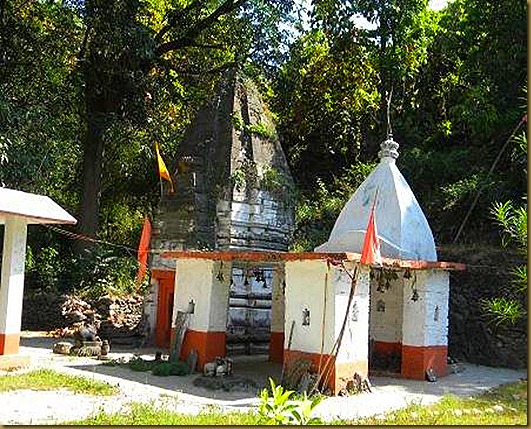
Ancient temple dedicated to Lord Shiva (centre)
Nandi
On the way to the river-crossing site, we came across some really old shrines, one of which was dedicated to Lord Shiva. The one of the locals told me how tradition has it that in the past, three hundred and sixty five temples had been been in one night! I guess there is a reason why this portion of Uttarakhand is called Dev-Bhoomi, translated, “Land of the gods”. One of the temples that we came across seemed to be really old.
A brief respite after the stream walking activity
After lunch we set out for the second activity of the day, which was termed as stream walking. For this activity we were instructed to wear shoes to protect us from the stones that lay on the bed of the stream. The stream walk was an arduous exercise especially since the rocks were slippery. Many of us had embarrassing falls mostly because we fell on our backsides and were greeted with a, “happy birthday” chorus by others.
That is me waiting for the train to Delhi from Haridwar
The fifth day marked the day of our return to Gurgaon. The trip to the railway station at Haridwar was undertaken in jeeps. At the Haridwar Railway station we boarded the Shatabdi train back to Delhi. On the Shatabdi we were pampered by the attendants who kept feeding us something or the other. The relaxed and comfortable atmosphere on board the train was a welcome break from the four days of adventure. We reached Gurgaon at about twelve-thirty in the morning, handed over the students to their parents, and were back in our beds for a restful sleep!
Looking at the visitors from Gurgaon
